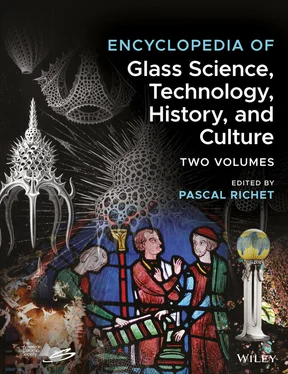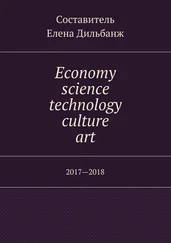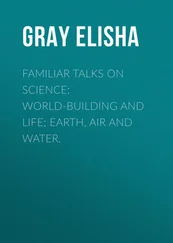Natural History 10.1 Obsidian in Prehistory 1 Introduction 2 Geological Formation, Properties, and Sources 3 Obsidian Use in Prehistory 4 Obsidian Studies 5 Provenance Analysis Methods 6 The Issue of Obsidian Sources: The European Region 7 Obsidian Artifacts Studied in the Western Mediterranean 8 Obsidian Trade and Socioeconomic Systems 9 Conclusions and Closing Perspectives Acknowledgments References 10.2 Ancient Glass, Late Bronze Age 1 Introduction 2 Early Glass: From Faience to Glassmaking 3 Chemical Composition: The Analytical Standpoint 4 Material Sources 5 The Issue of Provenance 6 The Isotopic Clues 7 Perspectives References 10.3 Roman Glass 1 Introduction 2 Glass Synthesis 3 Provenance and Location of Glassmaking 4 Color Generation and Control 5 Secondary Production and Consumption 6 Recycling, Shifts in Production, and Decline 7 Perspectives References 10.4 Glass and the Philosophy of Matter in Antiquity 1 Introduction 2 Near Eastern Views on Glass 3 The Glass of the Greek Philosophers 4 Glass and Alchemy 5 The Byzantine Connection 6 Perspectives References 10.5 Ancient Glassworking 1 Introduction 2 Basic Features of Glass Shaping 3 Early Shaping Methods 4 The Slow Blowing Revolution 5 Decoration 6 Special Techniques 7 Secondary Glassworking 8 A Short Retrospective Overview 9 Perspectives References 10.6 Glazes and Enamels 1 Introduction 2 Preparation and Thermal Constraints 3 Composition and Microstructure 4 Coloration 5 Enamels 6 Glazes 7 Perspectives References 10.7 Venetian Glass 1 Introduction 2 Raw Materials and Glassmaking 3 The Origins of Venetian Glass 4 Venetian Renaissance Glass 5
Façon de Venise Glass and Competition 6 Other Italian Glassmaking Traditions 7 Perspectives Acknowledgments References 10.8 Stained Glass Windows 1 Introduction 2 Making Glass Sheets 3 Social Context 4 Glass Decoration 5 Leading 6 Later Trends: Nineteenth to Twentieth Century 7 Conservation 8 Perspectives Acknowledgments References 10.9 Furnaces and Glassmaking Processes: From Ancient Tradition to Modernity 1 Introduction 2 The Written Sources 3 Furnaces 4 Plate Glass 5 Container Glass 6 Perspectives Acknowledgments References 10.10 Glass, the Wonder Maker of Science 1 Introduction 2 The Source of Optics 3 The Enabler of Chemistry 4 Hotness and Air Weight Measured 5 From Electrostatics to Subatomic Physics 6 Perspectives Acknowledgments References 10.11 A History of Glass Science 1 Introduction 2 Glass: An Impossible Definition? 3 The Origins 4 The Early Modern Period (Sixteenth to Eighteenth Centuries) 5 The Chemical Revolution 6 The Crystal Connection 7 The Multiple Roots of Glass Science 8 Perspectives Acknowledgments References 10.12 A History of Glass Science 1 Introduction 2 The Invention of the Glass Museum 3 Glass Museums 4 Types of Glass Collections 5 The Corning Museum of Glass 6 Glass Museums: Purpose and Concerns 7 Perspectives Acknowledgments References 11.1 Postface – A Personal Retrospective References
4 Subject Index
5 Name Index
6 End User License Agreement
1 General Introduction Table A.1 Coordination numbers, effective ionic radii, field strengths, and e... Table A.2 S.I. units and physical constants.
2 Chapter 1.1 Table 1 Typical compositions of industrial glasses comprising main oxides onl... Table 2 Viscosity ranges of industrially manufactured glasses. Table 3 Empirical factors for the calculation of viscosities [19] and elastic... Table 4 Empirical factors for the calculation of the thermal expansion coeffi...
3 Chapter 1.2 Table 1 Natural and synthetic raw materials compositions and prices.
4 Chapter 1.3 Table 1 Maximum iron contents in various types of glasses, given in ppm of st... Table 2 Batch calculation scheme. Table 3 Redox factors R ( i ) of selected active raw materials i ; these factors r... Table 4 Scheme for final batch adjustment with sodium sulphate set to 4 kg/t ... Table 5 Calculation scheme for the energetics of a soda‐lime silicate glass (...
5 Chapter 1.4 Table 1 Comparison of forming processes. Table 2 List of symbols regarding equilibrium thickness mechanism.
6 Chapter 1.6 Table 1 Composition of glass fibers found in literature and/or commercial mar... Table 2 Typical properties of fiberglass found in literature and/or commercia... Table 3 Top 10 fiberglass producers (2008 – 2013). Table 4 Classification and functionality of ingredients in fiber sizing/binde... Table 5 Common organosilanes.
7 Chapter 1.7 Table 1 Summary of simulation process steps. Table 2 List of commonly used transport equations in advection–diffusion form... Table 3 Interacting zones of a complete glass melting‐furnace model. Table 4 Required boundary conditions for a complete glass melting‐furnace mod...
8 Chapter 2.1 Table 1 Structural classification of commonly studied oxides in glasses. Freq...
9 Chapter 2.2 Table 1 Summary of techniques used to determine various features of glass str...
10 Chapter 2.3 Table 1 Composition of the MAS glass (at %), awhere “pristine” denotes the ho...
11 Chapter 2.6 Table 1 Oxide composition (wt %) of common commercial glasses and glass of co...
12 Chapter 2.7 Table 1 Degrees of freedom ( f ) of d ‐dimensional TD networks of rigid units (δ ...
13 Chapter 2.9 Table 1 Comparison of various features of large‐scale computer simulations ca...
14 Chapter 3.1 Table 1 Critical cooling rate for some glasses, K/s. Table 2 Classification of cations according to Diezel's field strength. Table 3 Hausdorff dimensionality of the bonding system at glass transition.
15 Chapter 3.2 Table 1 Thermodynamic states in terms of affinity and its derivatives and in ... Table 2 Thermodynamic parameters measured from five different glass‐formers.
16 Chapter 3.3 Table 1 Transition temperatures of some materials.
17 Chapter 3.5Table 1 Partial molar volumes, thermal expansions, and compressibilities of o...
18 Chapter 3.6Table 1 Experimental calorimetric methods.Table 2 Partial molar relative entropies of oxides in silicate glasses, and e...Table 3 Partial molar heat capacities of oxides in glasses, C pi= a i+ b i T + Table 4 Partial molar heat capacities of oxides in melts, C p i= a i+ b i T + c iTable 5 Residual entropies of oxide glasses determined from calorimetric meas...Table 6 Determination of the Gibbs free energies of formation from the oxides...Table 7 Variations of the enthalpy (kJ/mol) of oxide glasses with the density...
19 Chapter 3.7Table 1 Properties of glasses P‐SK57 ®and P‐LaSF47 ®.Table 2 Calculated versus measured refractive index values for glasses P‐SK57
20 Chapter 3.11Table 1 Representative mechanical property ranges for different glass familie...
21 Chapter 3.12Table 1 Comparison of thermal and chemical strengthening (“ion stuffing” proc...Table 2 Characteristic tensile strength (95% confidence and 5% fractile) for ...Table 3 A comparison of different laser cutting methods [5].
22 Chapter 3.14Table 1 Coefficients involved in the enthalpy of strong and fragile liquids a...Table 2 First‐order glass‐to‐glass transitions under various pressures.Table 3 Dependence of the critical number n of supercluster atoms at T gon mel...
23 Chapter 4.1Table 1 Standard (fixed) points for fast determination of the viscosity–tempe...Table 2 Methods of measuring viscosity.Table 3 Frequently used three‐parameter ( A , B , C ) equations to represent the ...Table 4 Equations representing the temperature dependence of viscosity in ter...
24 Chapter 4.3Table 1 Arrhenius parameters for diffusion in silicate glasses and melts.Table 2 Arrhenius parameters for diffusion in nonsilicate glasses and melts.
Читать дальше












